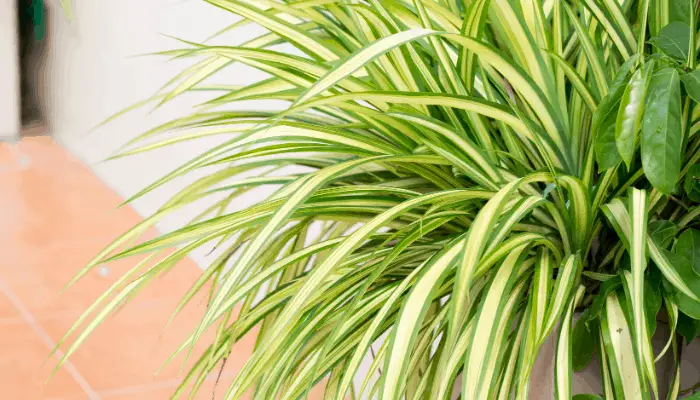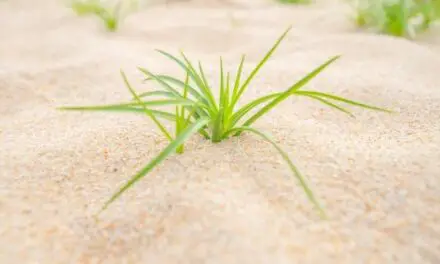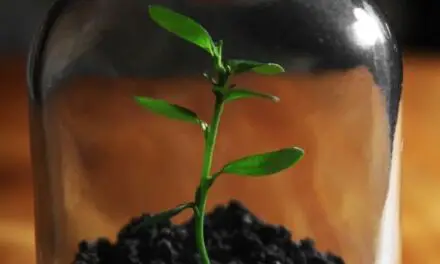If you love houseplants, the odds are good that you have a spider plant.
Spider plants are popular plants that are beautiful, easy to grow, and beneficial to have in your home or office because they serve as air purifiers.
It is a member of the lily family and has long, narrow leaves with a white or yellow stripe.
Spider plants grow relatively quickly.
They prefer a temperature range between 55-80 degrees F and need to be fertilized once or twice a month through the spring and summer months.
Spider plants are also non-toxic, making them a safe plant to have in your home if you have pets or children.
They are hardy, too, making them excellent choices for inexperienced or beginner gardeners.
While they are mostly indoor plants, they can grow and thrive outdoors, too, under the right conditions.
Spider plants look amazing but most people think they look even better when they are bushier.
Table of Contents
How To Make Your Spider Plant Bushier

The key to making your spider plant bushier is to meet all of its care needs and prune and repot it as soon as it is needed.
This will maximize your spider plant’s overall bushiness and allow it to grow to its full potential.
It also helps to fill in the plant with a few of the spiderettes that you cut away when pruning.
Use a sharp sterilized scissors when pruning and remove all of the foliage that looks diseased, discolored, or dead.
When removing the spiderettes, cut the long stem connecting the mother and baby plant at the base.
And as mentioned earlier, you can use a few of the spiderettes to fill out your spider plant.
But, at the end of the day, you’re not going to have a bushy spider plant if you don’t take good care of its basic needs.
Related Article: Can I Cut The Brown Tips Off My Spider Plant?
Basic Care Tips For A Bushier Spider Plant
Spider plants are forgiving, so conditions don’t have to be perfect for them to thrive, but the better you meet their needs and accommodate their preferences, the more healthy and beautiful your spider plant will be.
Water
Watering about once a week is usually adequate for spider plants.
When the top inch of the soil feels dry, you can give it some more water.
You want to ensure the soil is consistently moist but not overwet or soggy.
Be careful not to overwater, or the leaves could turn brown or black.
Temperature
Since spider plants prefer moderate temperatures, they won’t do well outdoors if temps are below 50 or over 80 F.
Indoor temperatures that stay within that range are best, but you can absolutely put out your potted spider plant during spring and summer months while temperatures aren’t too cold or too hot.
Sunlight
Spider plants prefer indirect bright light.
Too much direct sunlight can scorch or wilt them, but bright indirect light for no more than six hours each day will be ideal.
During the spring and summer seasons, you’ll want to use a liquid fertilizer to feed your spider plants at least once a month, sometimes twice.
Most experts don’t recommend fertilizing spider plants during the winter months because they grow quickly, and you don’t want to fertilize if they are outgrowing their pots.
Pruning, Propagating And Repotting Your Spider Plant
Pruning Your Spider Plant
It’s a good idea to give your spider plant a good pruning to keep it at a manageable size during spring or summer.
Trimming or cutting away dead or brown leaves or leaf tips any time of the year that you observe them will also help keep your spider plant bushy and in good health.
Propagating
It’s good to divide your spider plant when it gets too large.
The more babies, or spiderettes, your plant produces, the more you’ll need to keep an eye on watering and fertilizing because the babies use up much of the nutrients and energy from the soil.
Related Article: Can You Plant A Snake Plant With Another Indoor Plant?
Repotting
Cutting or pulling the root ball into a few different sections, each with plenty of leaves, then repotting the sections into separate planters with fresh potting soil will help keep all your plants healthy.
You can plant the spiderettes you cut away directly into moist soil or start them in water to help them grow longer and more vigorous roots before planting.
Once your spider plant’s roots are visibly growing through the pot’s drainage holes, it’s ready to be repotted into a larger container when spring comes.
Choose a pot with adequate drainage holes, and be sure to add fresh potting soil when you transplant your spider plant.
Spider plants aren’t too fussy when it comes to the soil so just use any good well-draining organic potting soil.
Final Thoughts
As you repot your spider plants, don’t forget you can add some of the spiderettes around your plant to fill it in and help it appear to be bushier.
This technique, along with regular care like watering, fertilizing, pruning, and replanting as needed, will all contribute to you having a beautiful and bushy spider plant you’ll enjoy all year long.




